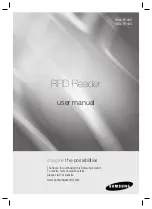
-27-
No. TQ1230001-OM104-A
W
Vertical lifting
(
This type of application should
generally be avoided.
)
■
Workpiece
If water drops or dust are attached on the workpiece surface, they may go into the vacuum ejector and may cause
the low vacuum performance. Also when workpieces are permeable, there is a case that sufficient lifting force
cannot get. In such cases, it is necessary to perform a suction test to check the compatibility to your application
before actual usage.
8.3
Suction cup precautions
■
Design
Warning
1
)
In cases where the workpieces are heavy or dangerous objects, etc., take measures to address a
possible loss of gripping force (installation of a drop prevention guide, etc.).
In the case of transportation by vacuum gripping using suction cups, the gripping force is lost when there is a
drop in vacuum pressure. Furthermore, since vacuum pressure can also deteriorate due to the wear and
cracking of cups, vacuum leakage from piping, etc., be certain to perform maintenance on vacuum
equipment.
■
Selection
Caution
1
)
The cup materials which can be used differ depending upon the operating environment.
An appropriate cup material should be selected. Furthermore, since suction cups are manufactured for use
with industrial products, they should not come into direct contact with medicines, food products, etc.
2
)
Depending upon the weight and shape of the workpieces, the diameter, quantity, and shape of cups
suitable for use will vary.
Refer to “3.3. How to calculate theoretical lifting force” for the theoretical lifting force. Also, the selectable
cups will differ based upon conditions other than the above, such as the condition of the workpiece surface
(presence or absence of oil or water), the workpiece material, and its gas permeability. Confirmation is
necessary by actually performing vacuum gripping on the subject workpieces.
3
)
Do not apply an impact or large force to a cup when gripping a workpiece.
This will cause the deformation, cracking, and wear of the cup to be accelerated. The stiffening ribs, etc.,
should touch lightly, while staying within the cup
skirt’s deformation range. Positioning should be performed
accurately, especially in the case of small-diameter cups.
4
)
When transporting vertically, factors such as acceleration, wind pressure, and impact force must be
considered in addition to the workpiece weight.
Use caution particularly when lifting items such as glass plates and circuit boards because a large force will
be applied by wind pressure. When a workpiece which is oriented vertically is transported horizontally, large
forces are applied by acceleration when movement is started and stopped. Furthermore, in cases where the
cup and workpiece can slip easily, accelerations and decelerations of horizontal movement should be kept to
a minimum.
5
)
When transporting flat shaped workpieces that have large surface areas using multiple cups, care
must be taken in arranging the cups, so that the workpieces are evenly gripped.
6
)
Use caution since the workpiece could rotate during transfer.
Use of more than one cup for each workpiece is recommended.
W
Cup
Horizontal lifting





































